一、内容
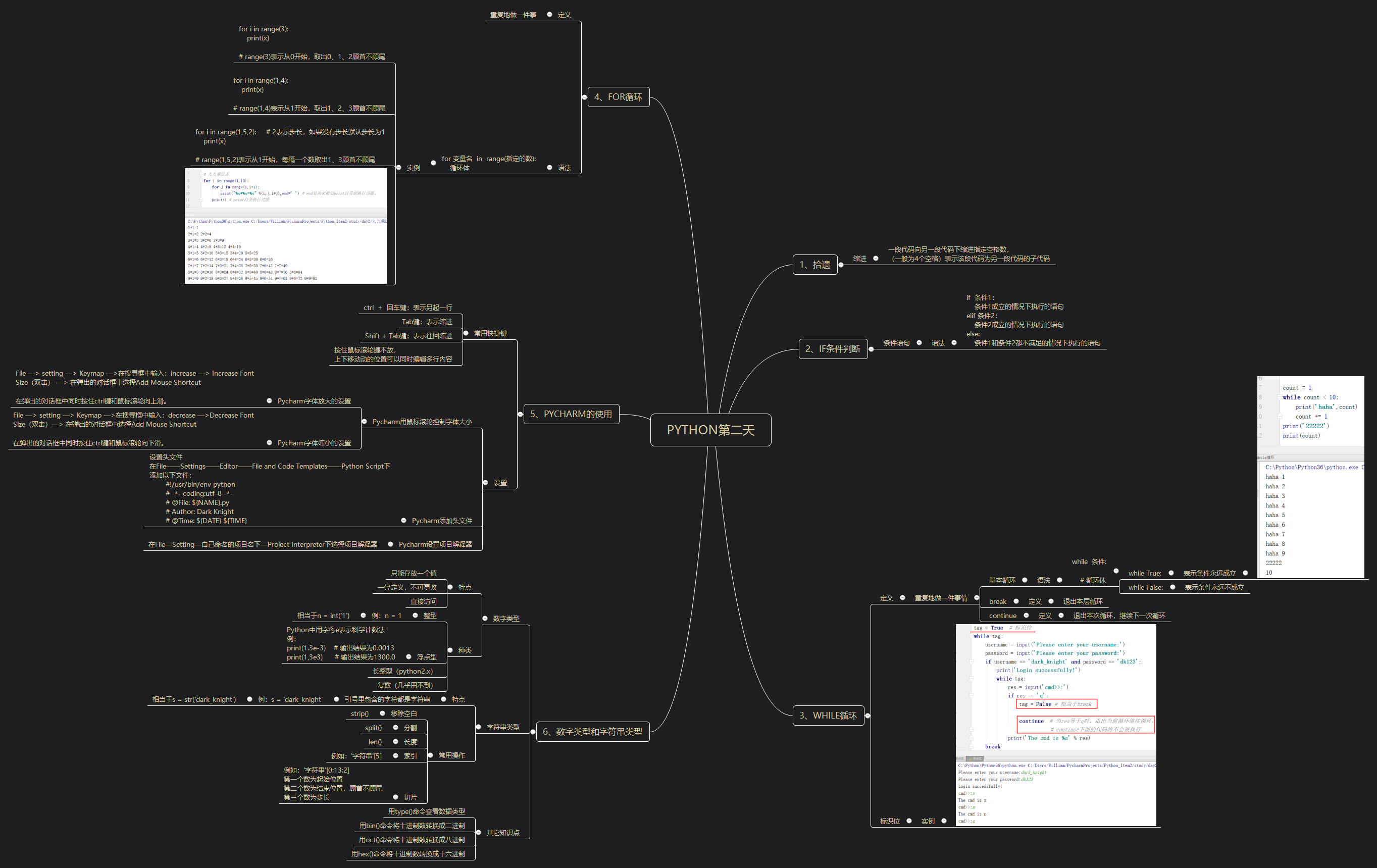
二、练习
练习1
题目:已知msg='hello knight 666'编写for循环,利用索引遍历出每一个字符
图示:
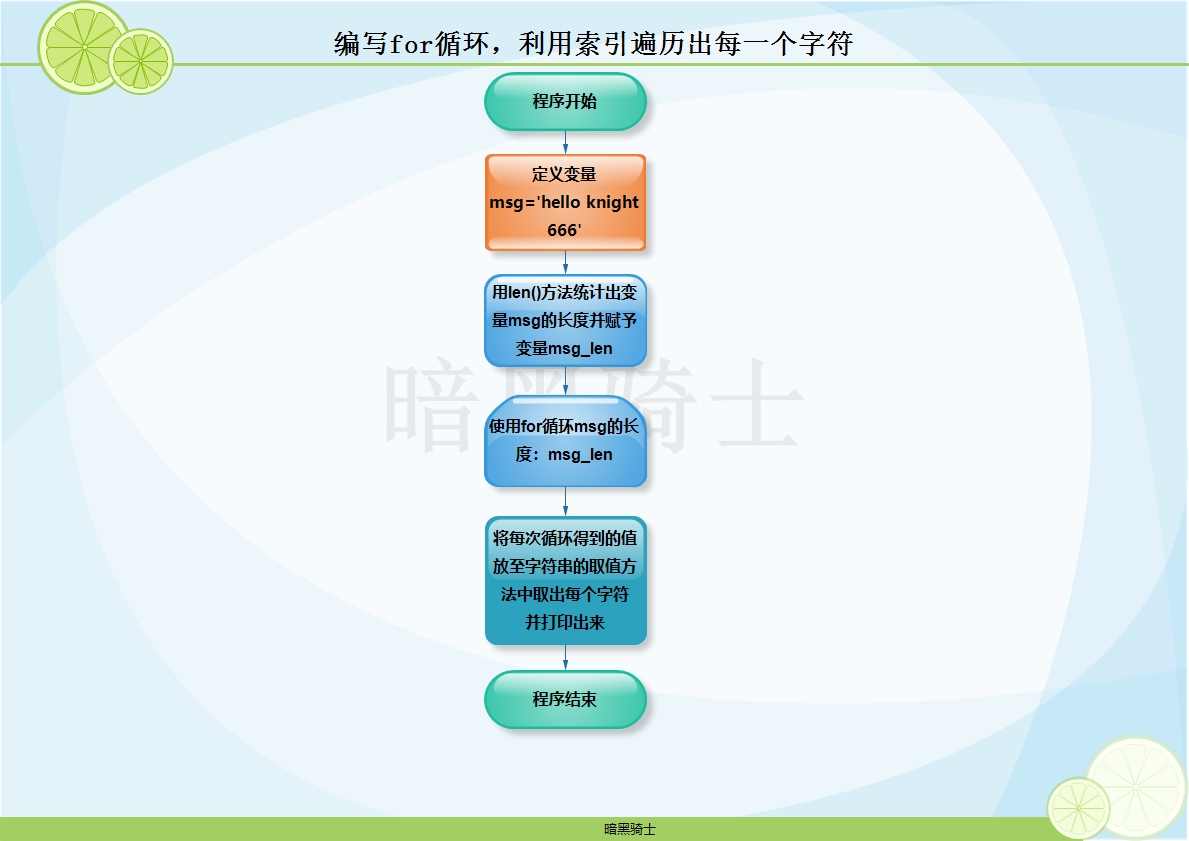
代码:
msg = 'hello knight 666'
msg_len = len(msg)
for i in range(msg_len):
print(msg[i])
输出结果:

h
e
l
l
o
k
n
i
g
h
t
6
6
6
练习2
题目:已知msg='hello knight 666'编写for循环,利用索引遍历出每一个字符
图示:

代码:
msg = 'hello knight 666'
count = 0
while True:
print(msg[count])
count += 1
if count == len(msg):
break
输出结果:

h
e
l
l
o
k
n
i
g
h
t
6
6
6
练习3
题目:已知变量msg='hello qishi',将msg中的qishi替换成knight
代码:
msg='hello qishi'
msg_new = msg.replace('qishi','knight')
print(msg_new)
输出结果:
hello knight
练习4
题目:已知 msg='/etc/a.txt|365|get' 将该字符的文件名,文件大小,操作方法切割出来。
代码:
msg ='/etc/a.txt|365|get'
msg_new = msg.split('|')
print('文件名:',msg_new[0])
print('文件大小:',msg_new[1])
print('操作方法:',msg_new[2])
输出结果:

文件名: /etc/a.txt 文件大小: 365 操作方法: get
练习5
题目:编写while循环,要求用户输入命令,如果命令为空,则继续输入
图示:

代码:
count = 0
while True:
user_input = input('Please enter command:').strip()
if not user_input:
continue
print('The cmd is %s'%user_input)
练习6
题目:编写while循环,让用户输入用户名和密码,如果用户为空或者数字,则重新输入
图示:
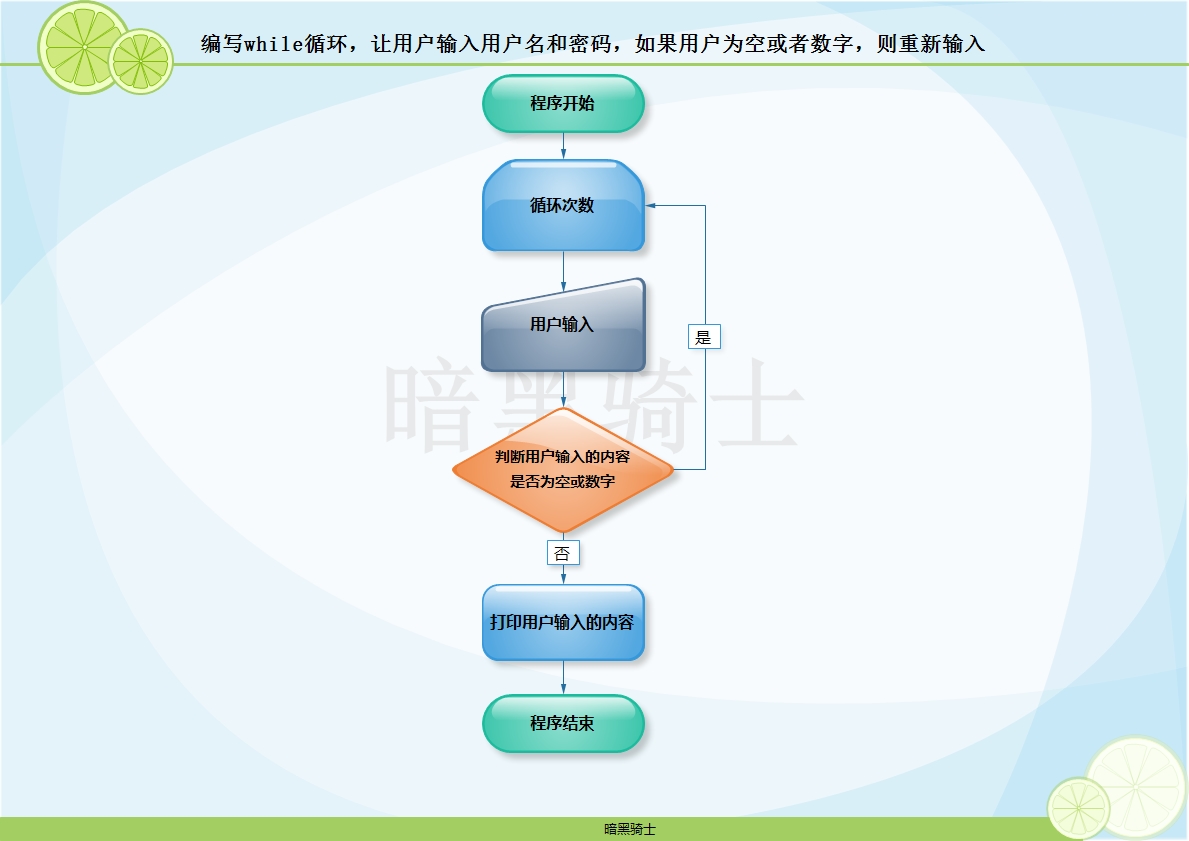
代码:
while True:
user = input('Please enter username:').strip()
password = input('Please enter password:')
if not user or user.isdigit():
print('The username you entered is blank, please re-enter')
continue
print('Welcome %s'%user)
break
练习7
题目:编写while循环,让用户输入内容,判断输入的内容以knight开头的,则将该字符串加上_successful结尾
图示:
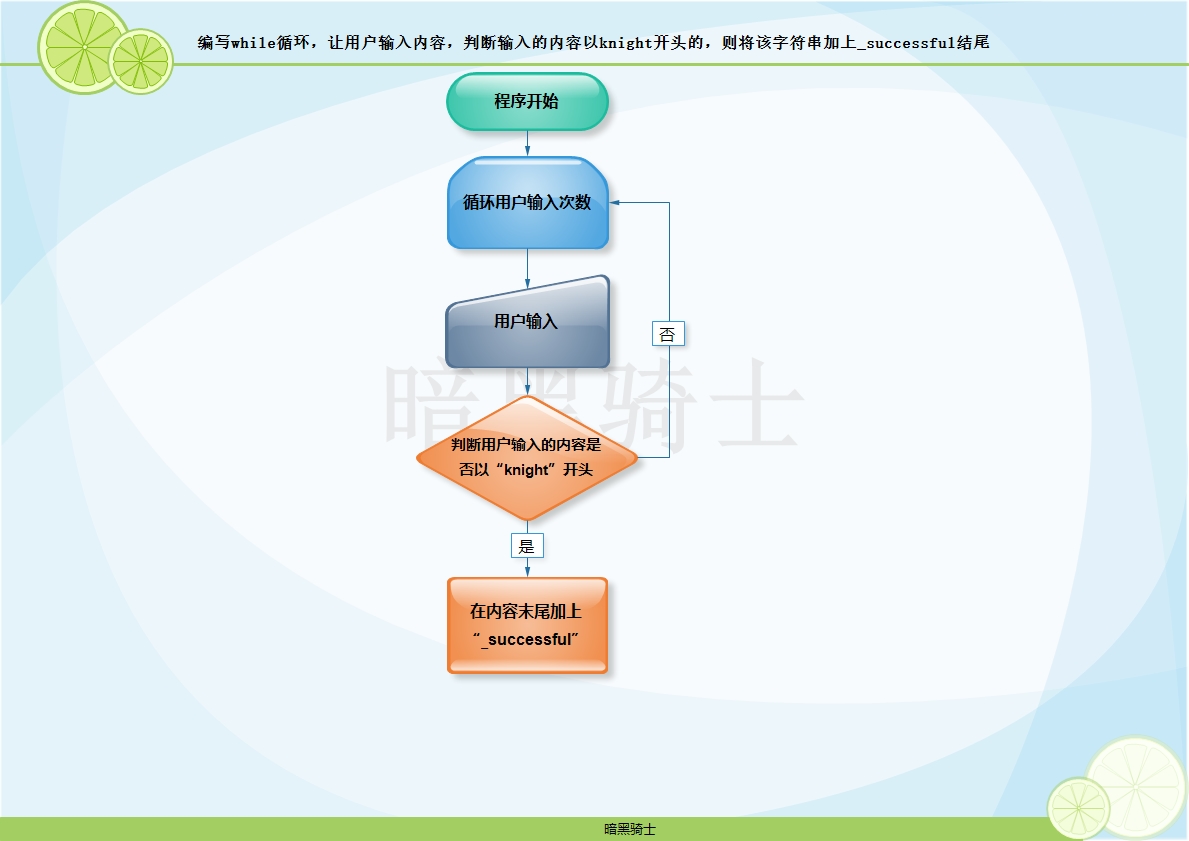
代码1:
while True:
user = input('Please enter:').strip()
if user.startswith('knight'):
print(user+'_successful')
代码2:
while True:
user = input('Please enter:').strip()
if user.startswith('knight'):
print('%s%s'%(user,'_successful'))
练习8
题目:
(1)两层while循环,外层的while循环,让用户输入用户名、密码、工作了几个月、每月的工资(整数),用户名或密码为空,或者工作的月数不为整数,或者月工资不为整数,则重新输入
(2)认证成功,进入下一层while循环,打印命令提示,有查询总工资,查询用户身份(如果用户名为knight则打印super user,如果用户名为tangbao或者zhuozi则打印normal user,其余情况均打印unknown user),退出功能
(3)要求用户输入退出,则退出所有循环(使用tag的方式)
图示:
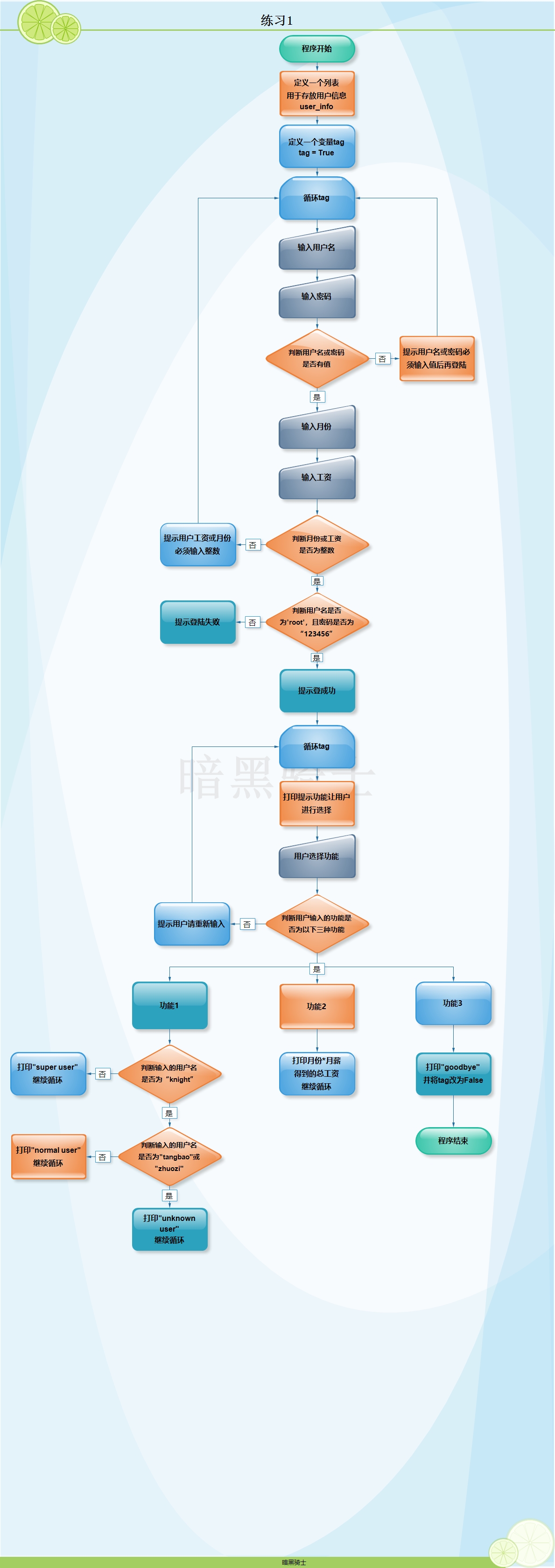
代码:
user_info = ['knight','zhuozi','tangbao']
tag = True
while tag:
username = input('Please enter username:').strip()
password = input('Please enter password:')
if not username or not password:
print('Your account or password is blank, please re-enter')
continue
month = input('Please enter the month:').strip()
salary = input('Please enter the salary:').strip()
if not month.isdigit() or not salary.isdigit():
print('The month or salary you enter must be an integer.')
if username == 'root' and password == '123456':
print('Login successfully!')
while tag:
print('请选择以下功能
1、查询用户功能
2、查询总工资功能
3、退出')
cmd = input('Please select function:').strip()
if cmd == '1':
user = input('Please enter username:').strip()
if user == 'knight':
print('super user')
elif user == 'tangbao' or user == 'zhuozi':
print('normal user')
else:
print('known user')
elif cmd =='2':
print('Your total salary is %s'%(int(month)*int(salary)))
elif cmd =='3':
print('Goodbye!')
tag = False
else:
print('Invalid command,please try again!')
else:
print('Sorry,your account or password is incorrect,please try again!')
三、英语
1、invalid
[ˈɪnvəlɪd;ɪnˈvælɪd] adj.无效的
2、item
['aɪtəm] n.项目
3、incorrect
[,ɪnkə'rɛkt] adj. 错误的,不正确的
4、range
[rendʒ] n. 范围
5、parameter
[pə'ræmɪtɚ] n. 参数
6、error
['ɛrɚ] n.错误
7、step
[stɛp] n.步
8、setting
['sɛtɪŋ] v.设定
9、key
[kiː] n.键
10、value
['vælju] n.值
11、increase
['ɪnkris] v.增加
12、decrease
[dɪ'kris] v.减少
13、script
[skrɪpt] n.脚本
14、font
[fɑnt] n. 字体
15、type
[taɪp] n.类型
16、strip
[strɪp] vt.剥离;脱去
17、split
[splɪt] vt.分割
18、count
[kaʊnt] vt.计数
19、continue
[kən'tɪnju] vi. 继续
20、break
[brek] vi.打断
